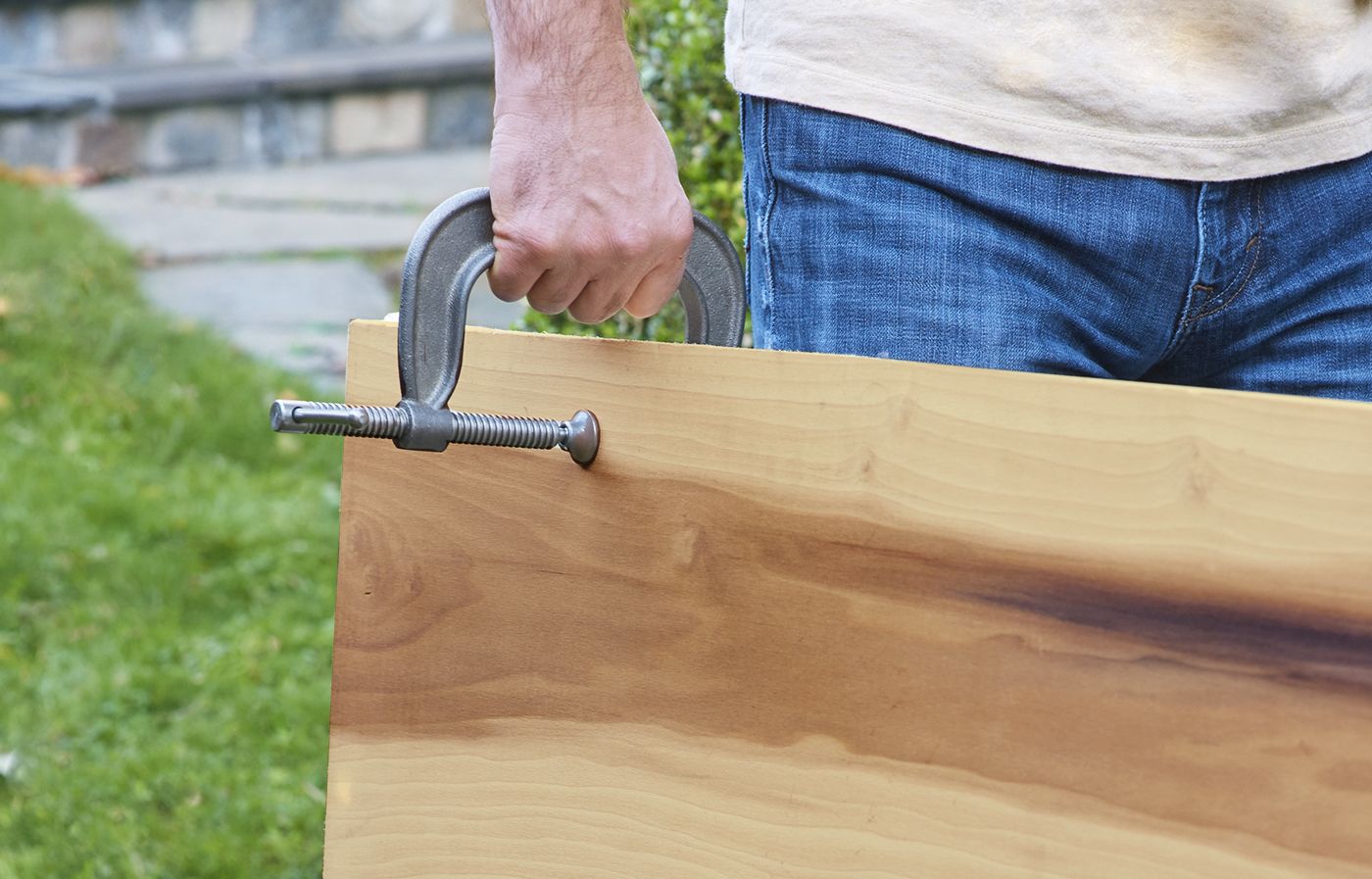C-clamps are a versatile tool in any workshop or toolbox. Whether you’re a DIY enthusiast, a professional craftsman, or someone tackling home improvement projects, C-clamps offer a wide range of practical uses. In this article, we’ll explore ten creative and practical ways to make the most of C-clamps in various applications.
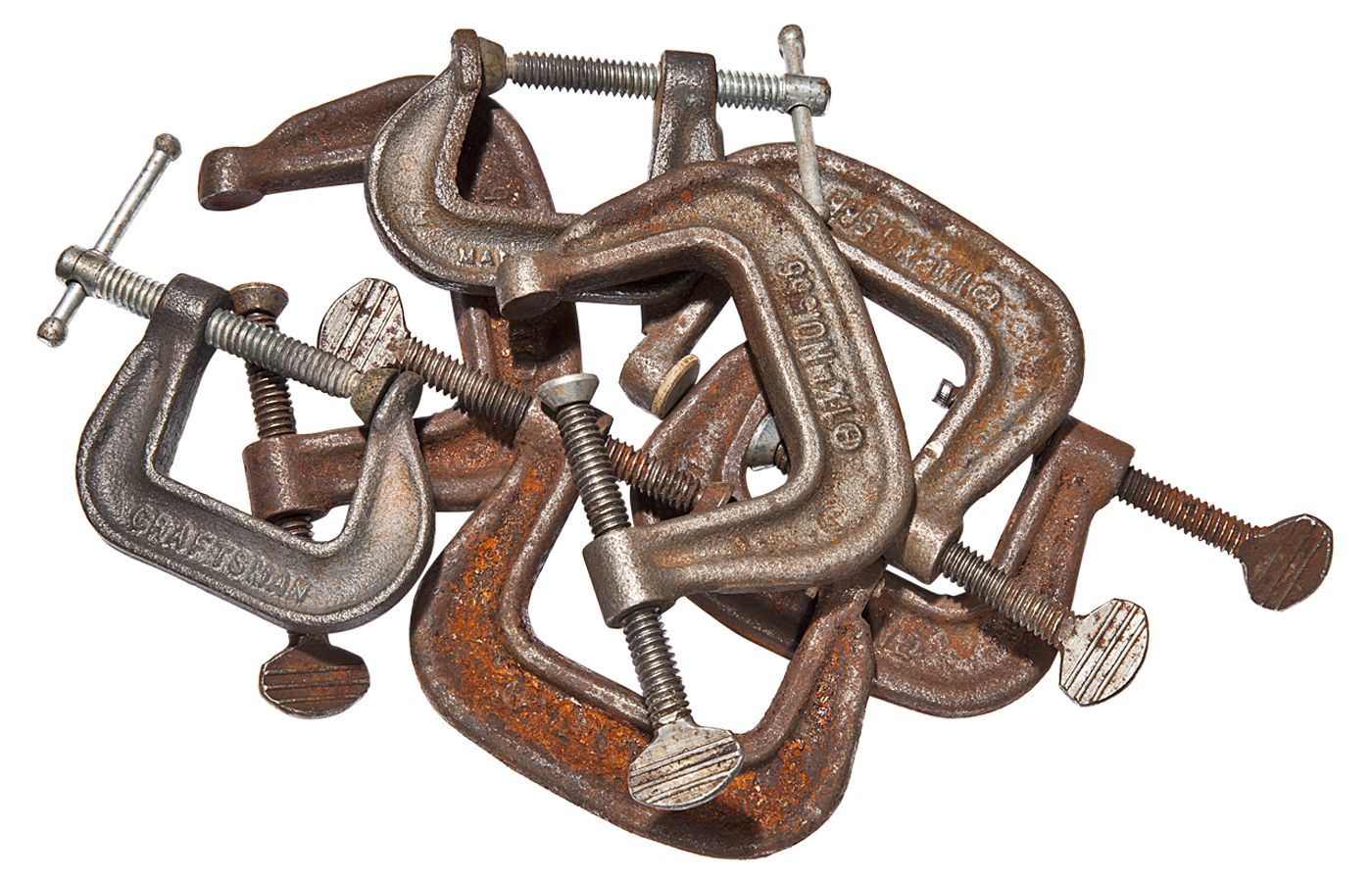
1. Make Rustic Bookends
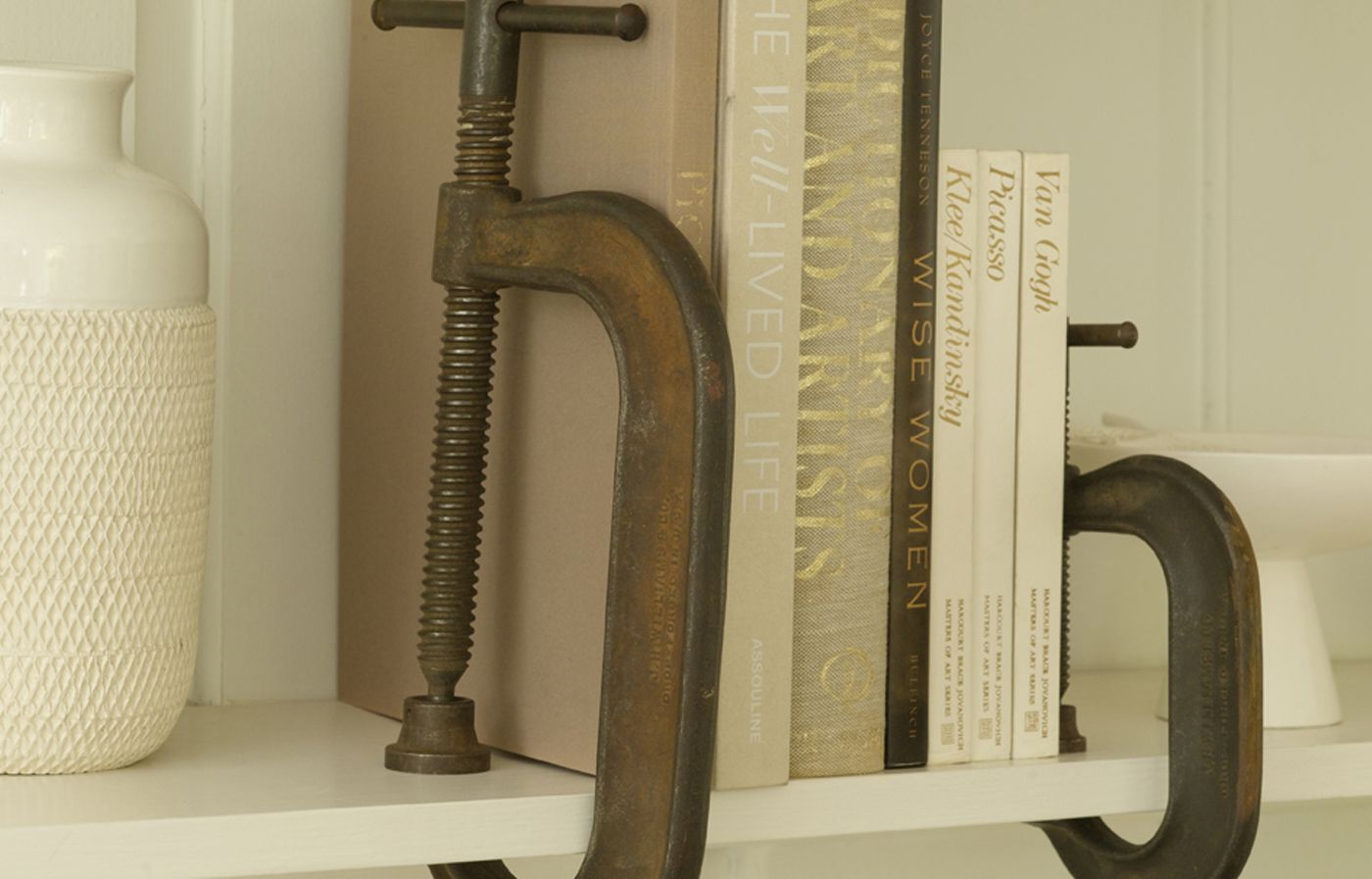
Transform your bookshelf with a touch of industrial chic by using oversized C-clamps as bookends. This creative approach keeps your books neatly organized while adding a unique decorative element to your space.
To create this look, secure large C-clamps on either end of a row of books. The sturdy metal construction of the clamps ensures that even heavy hardcovers stay upright. Paint the clamps in colors that complement your decor, or leave them in their natural metallic finish for a more rustic appeal. You can also experiment with different sizes of C-clamps for a varied and eye-catching display.
2. Substitute a C-clamp for a Pipe Wrench

When you don’t have a pipe wrench handy, a C-clamp can serve as an effective substitute. To use a C-clamp as a makeshift pipe wrench, follow these steps:
- Select a C-clamp that’s large enough to fit around the pipe connector.
- Tighten the clamp securely around the stubborn pipe’s connector.
- Use the clamp’s handle as a lever, gripping it firmly.
- Apply steady pressure and twist to loosen the pipe.
This method can be useful for DIY plumbing repairs or when working in tight spaces where a traditional pipe wrench might be cumbersome. C-clamps can handle varied pipe sizes. To prevent surface damage and for additional grip, wrap a cloth around the pipe before securing the C-clamp.
3. Use a C-clamp to Ferry Project Materials
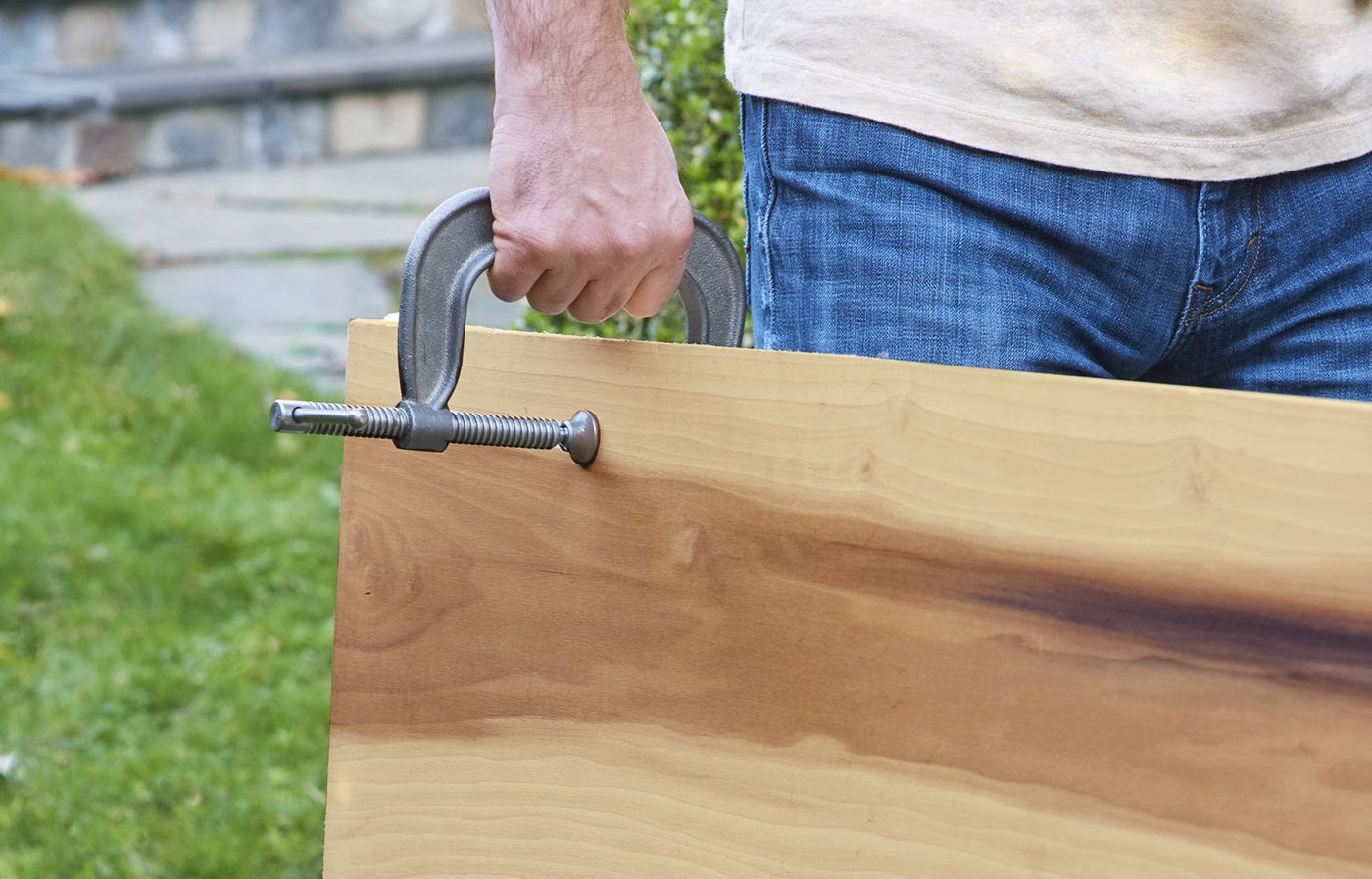
Large sheet materials like plywood or drywall can be unwieldy and difficult to transport. C-clamps are a great solution to this problem because they can be used as makeshift handles. Here’s how to use C-clamps to transport project materials:
- Choose two or more C-clamps of appropriate size for the material’s thickness.
- Attach the clamps along the edges of the sheet goods.
- Use the protruding parts of the clamps as handles for a secure grip.
- Lift and carry the materials with improved leverage and control.
This technique makes it easier to move heavy or awkward materials and reduces the risk of damage to the edges of your project materials during transport. Adding sturdy ropes or straps through the clamps can give you even more support.
4. Create a Storage Unit With C-Clamps
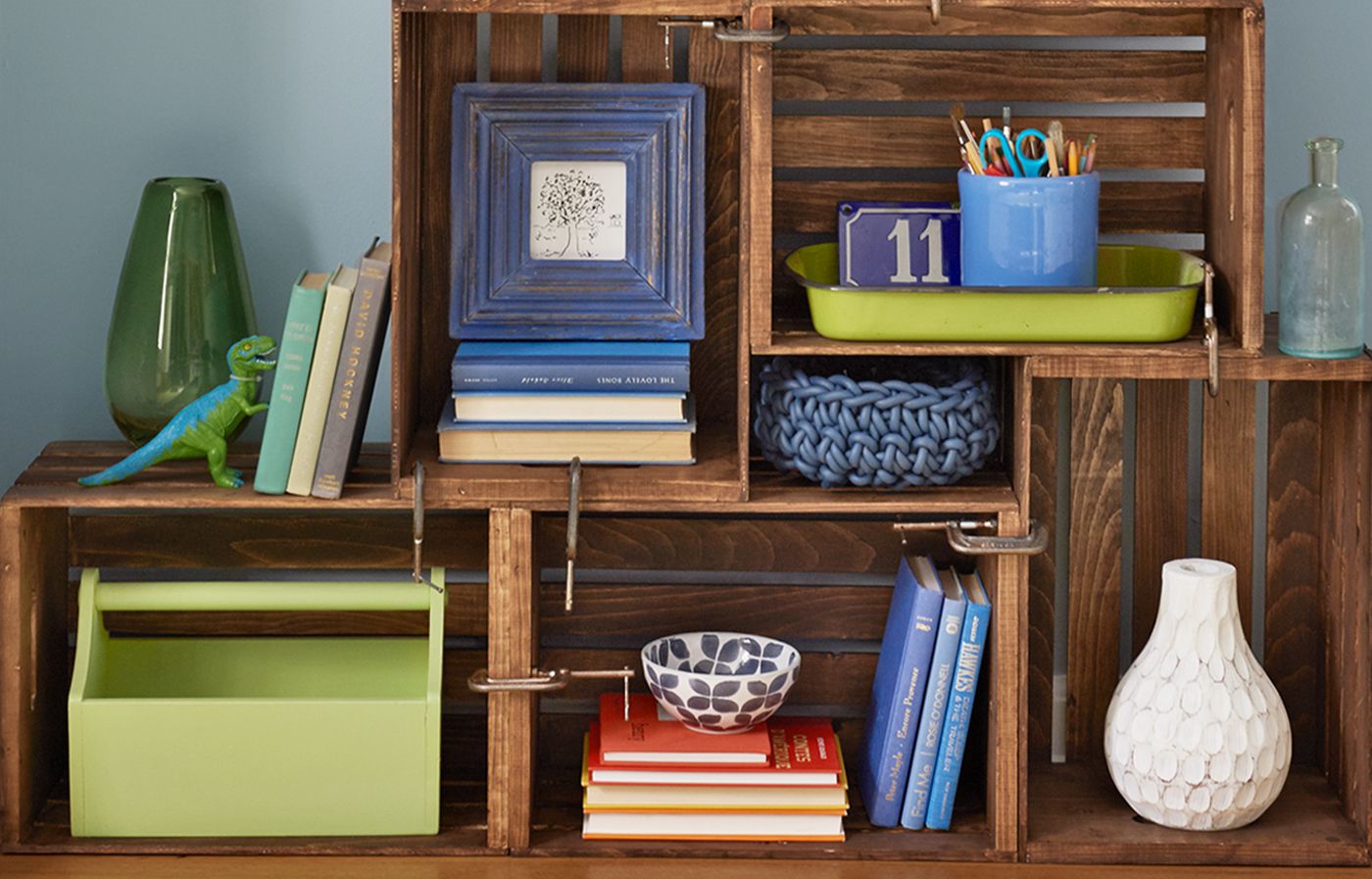
Craft a custom storage solution using inexpensive wooden crates and C-clamps. This DIY project allows you to create a unique piece of furniture without power tools. Here’s a step-by-step guide:
- Gather several wooden crates of similar size.
- Arrange the crates in your desired configuration.
- Apply paint or stain to the crates for a cohesive look.
- Once dry, stack the crates in your chosen arrangement.
- Use C-clamps to secure the crates together at the corners.
- Adjust the clamps as needed to ensure stability.
This versatile storage unit can serve as a bookshelf, display case, or organizer for various items around your home or workspace. The flexibility to reconfigure the stacking pattern means you can customize your unit to fit different spaces or needs. You can also mix crate colors or finishes for more personalization.
5. Secure a Garage Door With C-clamps

Enhance your home security when you’re away by using C-clamps to secure your garage door. This simple yet effective method can deter potential burglars who might attempt to bypass a standard garage door lock. Here’s how to do it:
- Select C-clamps that are at least 3 inches in size.
- Attach one clamp to each garage door track just above a roller.
- Tighten the clamps securely to prevent the door from opening.
- Remove the clamps when you return home.
Remember to inform family members or house sitters about this security measure to avoid any confusion or difficulty accessing the garage. This method acts as an added layer of defense alongside existing garage door locks. For added security, use multiple clamps or combine this method with other home security measures.
6. Use a C-clamp to Help Clear Drains
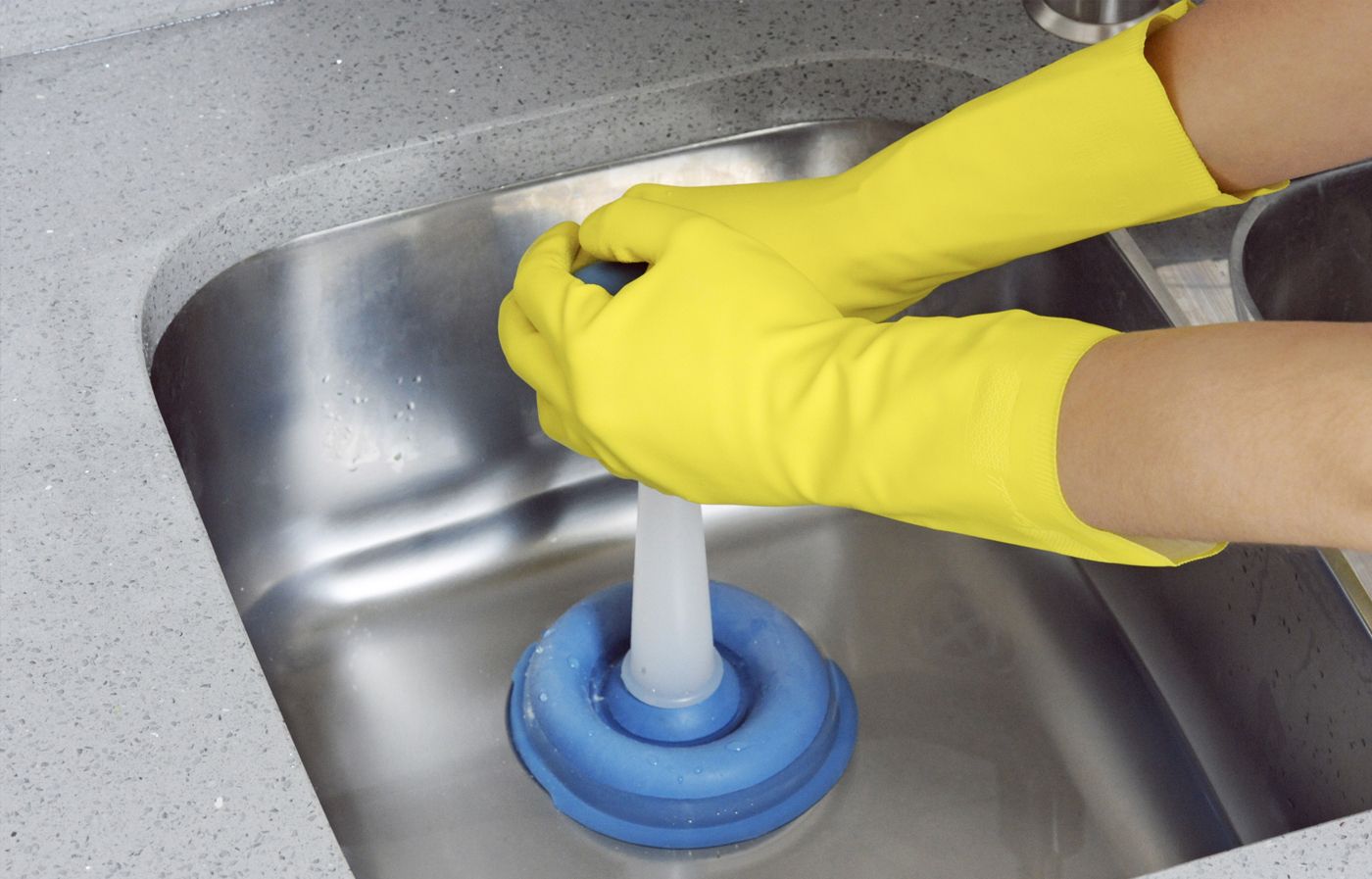
A C-clamp can be a valuable tool in your plumbing arsenal. Use a C-clamp in conjunction with a plunger to more easily clean a clogged drain. Follow these steps to use a C-clamp to unclog a drain:
- Locate the dishwasher hose under the sink.
- Tighten a C-clamp onto the hose to create a seal.
- Use a plunger on the sink drain as you normally would.
- Remove the C-clamp after successfully clearing the drain to restore normal dishwasher function.
The clamp prevents air from escaping through the dishwasher hose. This directs all the plunger’s force down the drain pipe, increasing its power to dislodge clogs. This technique can also be employed for dual sinks by clamping the secondary drain, ensuring all plunging force targets the primary blockage.
7. Critter-Proof Your Garbage Cans with a C-clamp

Keep wildlife out of your trash by using a large C-clamp to secure your garbage can lid. This simple solution can save you the hassle of cleaning up scattered trash and deter pests from making your property their dining spot. To critter-proof your garbage cans, use this technique:
- Choose a C-clamp large enough to span the lid and handle of your garbage can.
- Position the clamp to hold the lid and base handle together.
- Tighten the clamp securely.
- Remove the clamp when it’s time for trash collection.
This method is effective against raccoons and squirrels, who are known for being good at opening unsecured lids. In community living spaces, informing neighbors of this practice can help maintain a cleaner environment.
8. Organize Cords With a C-clamp
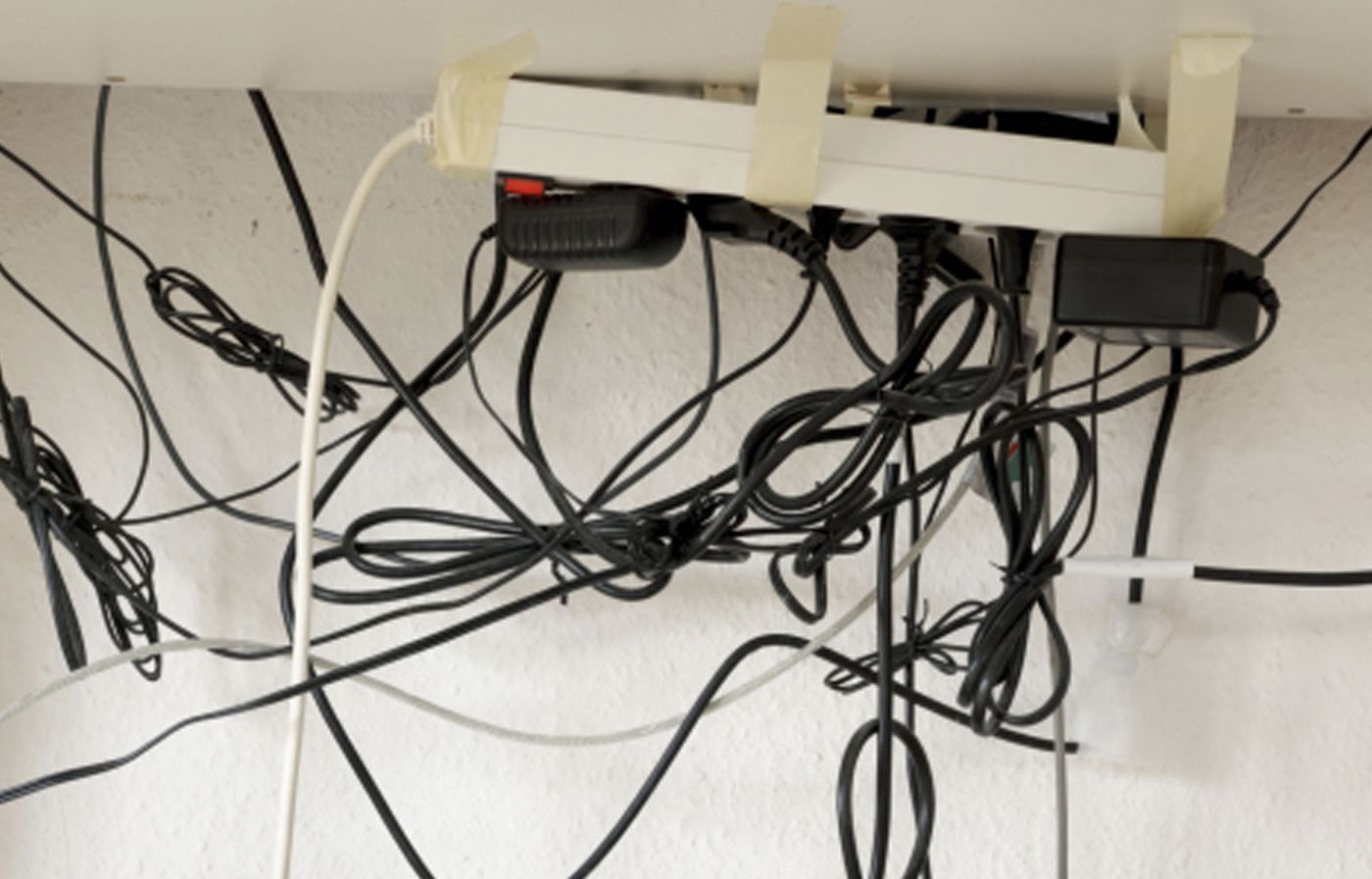
Tame the tangle of cords in your workspace by using C-clamps as cable organizers. This clever application keeps your power tool cords neat and accessible, reducing clutter and potential tripping hazards. Here’s how to set it up:
- Select small C-clamps suitable for the thickness of your workstation legs.
- Attach one clamp near the top of the leg and another near the bottom.
- Run the cords from your power tools through the openings of the clamps.
- Adjust the clamps as needed to keep the cords taut and organized.
This system allows for easy access to your tools while keeping cords off the floor and out of your way during projects. Labeling the clamps with tags or stickers can help you quickly identify which cord belongs to which tool, further improving organization and efficiency.
9. Rig a Clothesline With a C-clamp
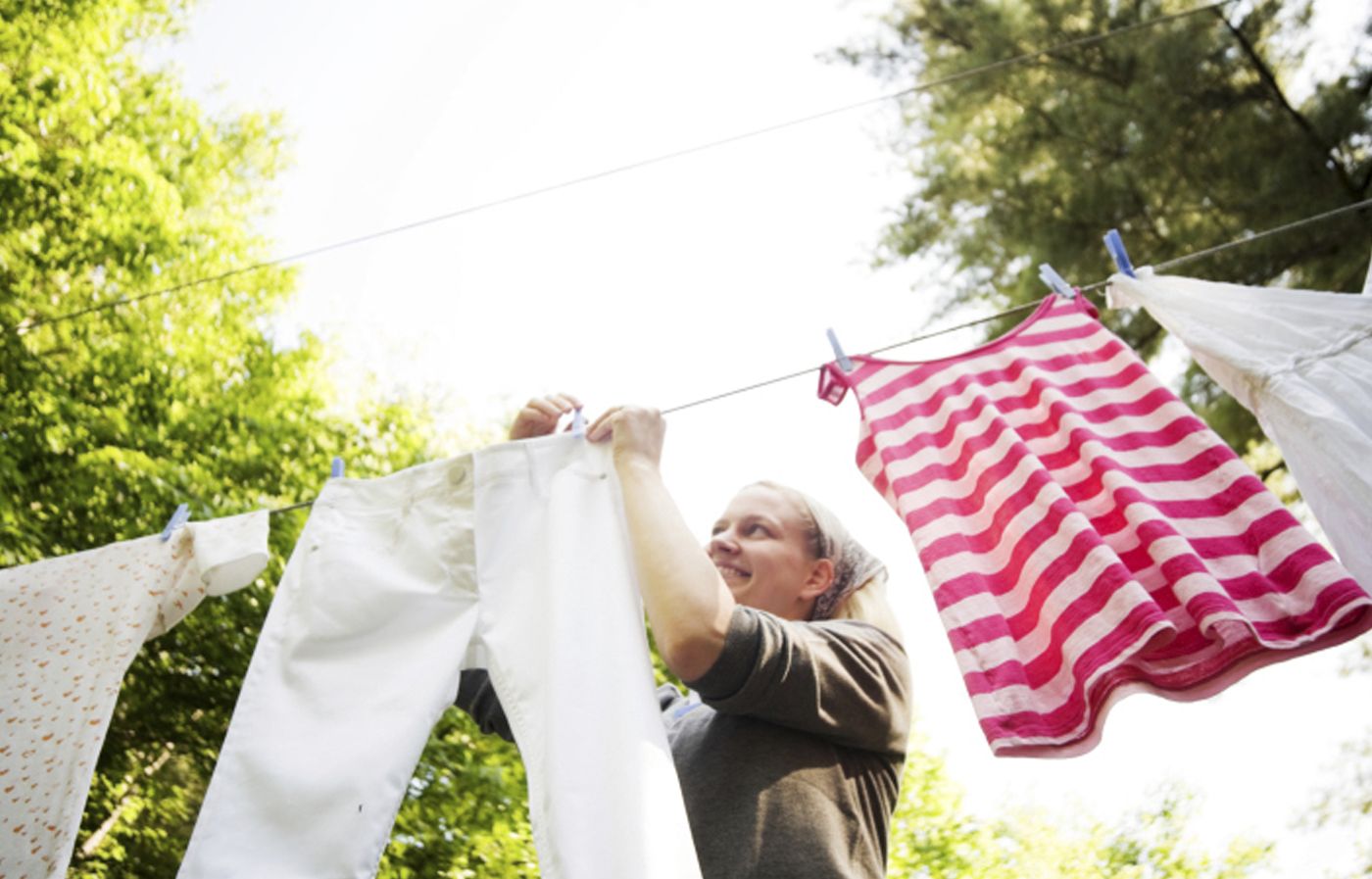
Create a temporary clothesline without damaging your property by using C-clamps as anchor points. This method is ideal for outdoor drying when you don’t want or can’t set up permanent installations. To rig a clothesline with C-clamps, follow these steps:
- Choose two sturdy C-clamps.
- Attach one clamp to a deck rail, post, or other stable structure.
- Secure the second clamp several feet away on another suitable anchor point.
- String a clothesline between the two clamps.
- Adjust the tension as needed for optimal drying.
This removable clothesline solution is perfect for seasonal use or when you need extra drying space for large items. The C-clamps’ versatility in gripping various surfaces makes it easy to set up and take down the clothesline as needed. Use weather-resistant ropes for outdoor use.
10. Use a C-clamp to Anchor a Tablecloth
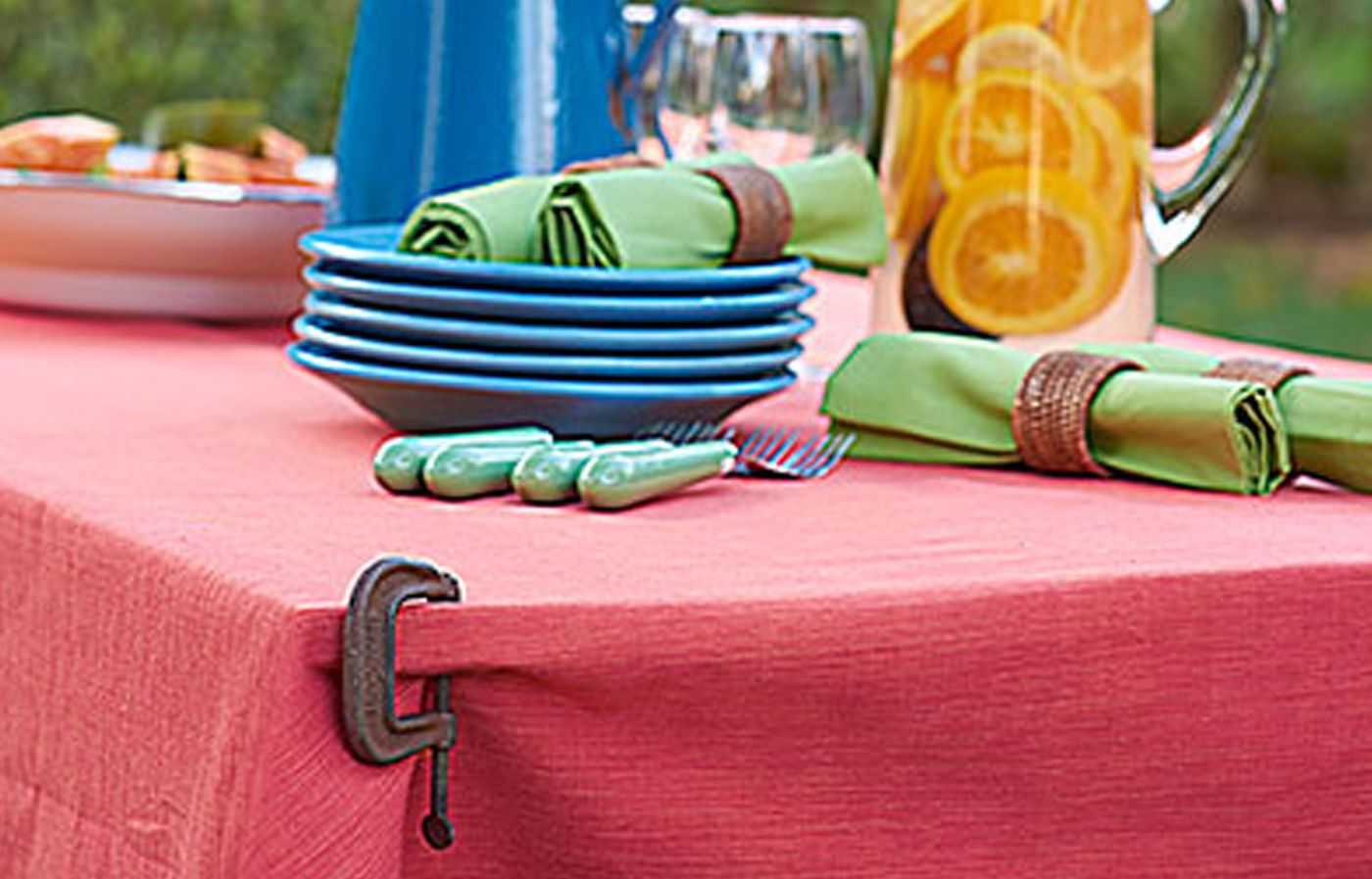
Keep your outdoor dining setup in place on windy days by using small C-clamps to anchor your tablecloth. It’s a simple trick, but it makes a big difference for outdoor dining and entertaining, especially on windy days. Follow these steps:
- Select small C-clamps that won’t damage your table.
- Attach the clamps to the corners of your outdoor table, securing the tablecloth.
- Adjust the clamps to hold the cloth firmly without causing wrinkles.
- Remove the clamps when the weather calms or when storing the table.
This method works well for various outdoor surfaces, including wood, metal, and plastic tables. It ensures a pleasant dining experience by keeping your setup in place. C-clamps can hold down other light outdoor objects, such as picnic blankets or tarps, during unpredictable weather.
